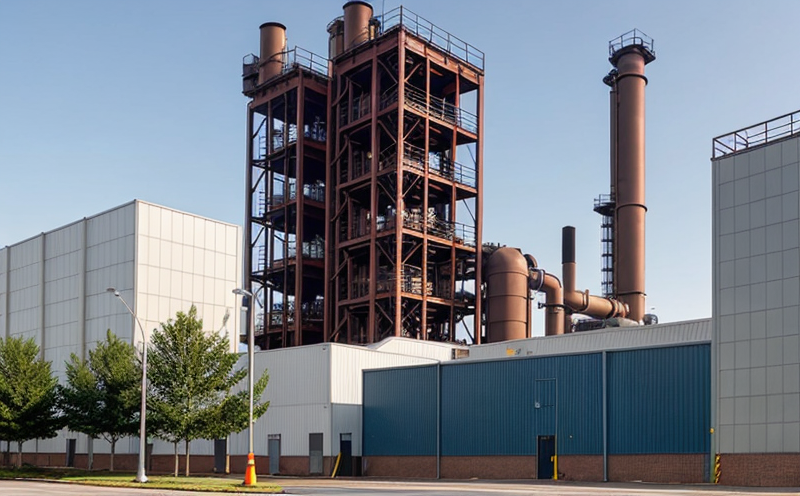ISO 14120 Safety Guarding Compliance Testing of Industrial Machines
The ISO 14120 series is a set of standards designed to ensure the safety of machinery and equipment in industrial settings. This standard focuses on the design, installation, operation, and maintenance of guarding systems for safeguarding personnel from hazards such as moving parts, hot surfaces, and other potentially harmful components.
Compliance with ISO 14120 is critical for manufacturers and operators to ensure that machinery complies with international safety regulations. The standard aims to prevent accidents and injuries by ensuring that all guards are designed and installed in a manner that effectively protects employees from harm during machine operation, maintenance, or servicing.
The testing process involves several key steps, including initial hazard identification, risk assessment, guard design, installation verification, and ongoing compliance checks. During the testing phase, our laboratory uses advanced instrumentation to measure factors such as guard clearance, force required to operate guards, and other critical parameters outlined in ISO 14120.
Our team of experts will work closely with you to understand your specific machine design and operational requirements. We can provide detailed testing services for various types of machinery, including but not limited to conveyors, presses, packaging machines, and automated assembly lines. Our laboratory is equipped with state-of-the-art facilities to meet the stringent requirements of ISO 14120.
For quality assurance purposes, we ensure that all testing processes adhere strictly to the guidelines provided in ISO 14120:2015. This includes conducting comprehensive inspections and measurements using precision instruments such as micrometers, calipers, force gauges, and video analysis systems.
Our laboratory also provides detailed reports on each test conducted, outlining all relevant findings and recommendations for any necessary adjustments or improvements to the guard system. These reports are crucial for demonstrating compliance with ISO 14120 standards during audits or inspections by regulatory bodies.
- Initial hazard identification
- Risk assessment and analysis
- Guard design and prototyping
We understand that every piece of machinery is unique, which is why our approach to testing is highly tailored. We take into account the specific operating conditions, environment, and potential hazards associated with each machine when designing our test protocols.
Scope and Methodology
The scope of ISO 14120 compliance testing covers all aspects related to the design, installation, operation, and maintenance of guarding systems for safeguarding personnel from hazards present in industrial machinery. The methodology involves several key steps:
- Initial hazard identification
- Risk assessment
- Guard design and prototyping
- Installation verification
- Ongoing compliance checks
We begin the process by conducting an initial hazard identification, where we assess all potential risks associated with the machinery. This step is crucial in determining the appropriate type of guarding system required for safe operation.
Following this, a thorough risk assessment is conducted to evaluate the likelihood and severity of each identified hazard. Based on these assessments, we determine the necessary safeguards needed to mitigate risks effectively.
The guard design phase involves creating detailed blueprints and prototypes based on the findings from previous steps. During this stage, our engineers collaborate closely with your team to ensure that the proposed designs meet both functional requirements and safety standards.
Once the guards have been designed, they undergo rigorous installation verification testing to confirm their effectiveness in protecting personnel from hazards. This includes checking clearances between moving parts and fixed structures, ensuring proper alignment of guards during movement, and verifying force levels required for activating guards.
Ongoing compliance checks are essential throughout the lifecycle of machinery to ensure continued adherence to ISO 14120 standards. These regular inspections help identify any potential issues early on so that corrective actions can be taken promptly before they lead to accidents or injuries.
Quality and Reliability Assurance
At our laboratory, we take quality and reliability assurance very seriously. We employ a rigorous quality management system that ensures all aspects of ISO 14120 compliance testing are conducted accurately and consistently.
- Advanced instrumentation for precise measurements
- Certified technicians with extensive experience in industrial safety
- Detailed documentation and reporting for every test
We use only the most advanced instrumentation to ensure accurate measurements of critical parameters such as guard clearance, force required to operate guards, and other key factors. Our certified technicians possess years of experience working with industrial machinery and are well-versed in best practices for ensuring compliance with ISO 14120 standards.
Every test conducted is meticulously documented, providing comprehensive records that can be easily referenced at any time. These detailed reports serve as valuable resources when demonstrating compliance during audits or inspections by regulatory bodies.
We also offer training programs to help your personnel understand the importance of proper machinery guarding and how it contributes to overall safety within industrial environments. By investing in such education initiatives, we aim to empower your team with the knowledge needed to maintain high levels of safety across all operations.
Use Cases and Application Examples
- Conveyors: Ensuring safe access while preventing accidental contact with moving parts
- Presses: Protecting operators from pinch points during setup or adjustment
- Packaging Machines: Safeguarding workers from sharp blades and hot surfaces during loading/unloading operations
The ISO 14120 safety guarding compliance testing is applicable to a wide range of industrial machinery across different sectors. Below are some common use cases:
- Conveyors: Conveyor systems play a vital role in material handling and distribution within manufacturing facilities. It's essential that proper guards be installed around conveyor belts to prevent accidental contact between personnel and moving parts.
- Presses: Hydraulic or mechanical presses are widely used for stamping, forming, and shaping metals and other materials. During setup and adjustment, operators need protection from pinch points caused by closing mechanisms.
- Packaging Machines: Automated packaging machines often feature sharp blades and hot surfaces that can pose significant risks if not properly guarded during loading/unloading operations.





